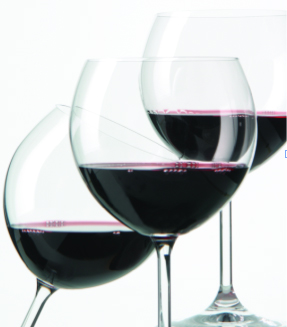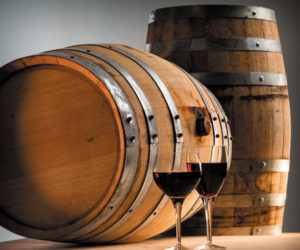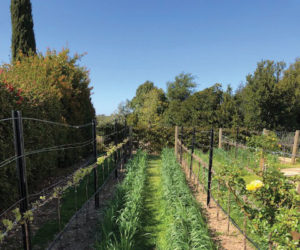Q
I am allergic to sulfites in wine. Can I pasteurize my wine instead, and if so how? Does this type of preservation last as the chemical mentioned and not affect the taste of wine?
Rainero Morgia
Bell Gardens, California
A
Certainly you can try to pasteurize (heat at a certain temperature for a certain amount of time) your wine if you like. Many foods and beverages (like milk) are so heat treated in order to kill any bacteria, yeast or other organisms. Louis Pasteur, the Frenchman who gave the process his name back in the 1800s, actually was hired by a winery to research methods to increase the stability of wine and to keep it from turning to vinegar. Typical pasteurization for milk involves heating it to 161 °F (72 °C) and holding it at that temperature for 15 seconds, then rapidly cooling it down back to 45 °F (7 °C) or so. I would caution that at that high of a temperature because the higher the temperature, the more damage you will do to the delicate aromas, colors and flavors in the wine.
Fortunately, pasteurization operates on a sliding scale and its effectiveness depends on a coefficient between time and temperature. You can use lower temperatures (145 °F/63 °C for example) but you must hold the wine at that temperature for a longer time, or about 30 minutes. This is what’s known as “batch pasteurization” or “vat pasteurization”. To do this, you’ll need a big pot that will hold bottles of your wine completely submerged, as well as a thermometer. A nice digital one with a probe on a cord, and a large readout would be ideal. You might have a problem finding a vessel big enough as your average kitchen pasta pan probably will be too small. One container I know would work is my grandma’s big turkey roasting pan, which is long enough to span two burners and tall enough to hold a single layer of wine bottles.
Fill your kitchen sink with cold water and toss in two handfuls of ice cubes. The goal is to have cold water, not ice water. Fill your big pan with enough water so that when you add the bottles, they are completely submerged. Heat the water to about 150 °F (66 °C), and carefully slip the bottles in. Keep the heat source on low/medium such that the temperature hovers around 145 °F (63 °C). Expect the water temperature to go down as your cooler bottles acclimate to the water bath. Hold at 145 °F (63 °C) for 30 minutes using the digital timer. After 30 minutes, remove the bottles (a canning jar lifter and hot pads might be useful) then lay them down in the sink in the cold water bath to rapidly chill. Repeat the above for as many bottles of wine as you would like to heat treat, adding ice to your sink as necessary and always making sure your water bath is at 145 °F (63 °C) for a full 30 minutes. Be careful when transferring hot bottles into cold water as the glass can very easily break with just a tap.
As pasteurizing wine is a big chore (as you can read above) and as it can negatively impact the character of one’s wine (even at lower temperatures and longer times) I always recommend that people speak with their physician to truly diagnose a sulfite allergy, which only affects a small fraction of the population. If you truly are allergic to sulfites, you should be aware that all wines (in fact all fermented beverages) will contain a small amount of naturally-occurring sulfites and that there is no such thing as a completely sulfite-free wine. Pasteurization should help in keeping your wine shelf stable due to microbial spoilage for quite a while though it could be argued you could get a similar effect using good sanitation and sterile filtering your wine before bottling. Unfortunately, pasteurization will not prevent oxidation in the bottle and if you don’t add sulfites, even to pasteurized wine, you will definitely notice that the wines won’t age as well or as gracefully as if you had added sulfites. If you can handle low levels of sulfites you might try a combination of sterile filtration, pasteurization and bottling with 10–15 ppm Free SO2, which is much lower than the standard 25–30 ppm. This would build in some protection against microbes (the filtration and pasteurization) while helping provide some antioxidant protection for graceful aging.
Q
I recently saw the following at a wine supply store: Winemaster Products, Wine Improver. The ingredients only list ethyl esters. The people in the store did not know anything about it and told me that it was a glycerin product to add mouthfeel. This does not sound right to me but I am interested in finding out more about it. I believe it may be used to improve aroma but is it used at fermentation or later? The producer on the label is Vinotheque, Dorval, Quebec, Canada. The item is a product of England. Any information would be appreciated.
John Koempel
Bath, Pennsylvania
A
Well, I looked through my books, catalogues and on the Internet and the only place I found “wine improver” listed as a product was on the Vinotheque website, www.vinotheque.ca. However, clicking on the product to find out more about it, or ingredients listed, the website returned, “Use to improve aroma, or cover up minor defects in wine, use 1⁄4 tsp per 4.5 litres.” Not very helpful, I know. This is a great example of a company doing a very poor job at educating their customer about what exactly they are selling and doesn’t instill confidence. I would contact them directly to find out information about their products.
Q
I have always used a small amount of copper piping when racking my wine as a preventative measure to control possible SO2 that leads to noticeable VA and mercaptan issues. This exposure to copper has always been brief. I have also paid attention to the nutritional needs of the yeast during the primary fermentation. I love my red wine and have never experienced “the stinkies.”
In a discussion at our CellarMasters wine club, one person said that using copper preventively introduces unnecessary heavy metals and could destroy beneficial volatile acids. Another person observed that most of our homes are full of copper piping and this is not recognized as a heavy metal hazard. We all agreed that there is a huge difference between the water in our pipes and wine, which is substantially more acidic, is a solvent and has more potentially reactive properties. In any event, where do you weigh in on this subject?
Henry Urick
Castaic, California
A
As you’ve probably read in my columns and in the Winemaker’s Answer Book, though I like to “let wine be what it will be,” when it comes to potentially toxic things like high residual levels of copper, I like to only add — when I really have to — in measurable amounts. Though admittedly it sounds more romantic, traditional and “natural” to pass wine through a copper pipe in order to prevent or treat hydrogen sulfide (H2S- which I think is what you mean when you wrote SO2 above), when it comes to copper, I like to use my pipettes to dose in a 1% liquid solution (which can be purchased from wine lab supply companies). I don’t want to panic you into thinking your wine is poisoned; you probably are fine, especially since copper will frequently bind up and drop out of solution to the bottom of your aging vessel over time. In my commercial winemaking life I am bound by foreign exporting rules for maximum residual copper limits, so I’ve just gotten into the habit of measuring out copper if I need it rather than just “guesstimate.” It’s like actually measuring out your tartaric acid instead of just adding it “until the must tastes right.” You can do the latter, it’s simply more efficient and accurate to use the former. You’re correct in mentioning that wine is different than water; because of its low pH and high alcohol, it is a much stronger solvent than water and will more quickly dissolve copper. Because of all this uncertainty, I choose to measure my copper additions.
Q
Have you had any experience making wine from passion fruit concentrate? It’s hard to get any kind of concentrate here that is “pure”. But I did find some passion fruit concentrate in 500-mL bottles here in the Philippines. Directions are to add four bottles of water to one bottle of concentrate. Any thoughts about other fruits to add, such as guava, mangoes or lychees?
Larry Cummins
Negros Oriental, Philippines
A
Well, I will admit I have never made a passion fruit wine (living in Napa, those pesky grapes just seem to be the most convenient sugar source at hand) but I will give you what advice I can. Passion fruit (or Passiflora edulis) is a popular worldwide flavor. The fruit is eaten in desserts and salads and the juice is made into popular juice drinks and cocktails. Its acidity (pH range 2.8–3.2) and low sugar content (15 Brix +/-) are the main winemaking challenges you will face.
You will have to dilute your concentrate and add some additional sugar in order to target a pH 3.3 or above as well as 22–24 °B. Adding water will do a good job of bringing your acid levels down though because I don’t know the concentration of your bottle, it’s hard to say how much to add. That’s where your handy hydrometer can come in. As far as fruits to add, I would go with something lower acid (like apple juice) or even red grape juice (or concentrate), which will benefit your fermentation by providing a more complete nutritional structure (like essential amino acids) as well as more typical “wine” flavors. Sometimes an all-tropical fruit fermentation can really spin off some odd aromas and using at least a little bit of grape juice or grape juice concentrate will get you a beverage more like you would expect.
If you don’t use grape juice concentrate you may need to add a little bit of table sugar to get up to your desired pre-fermentation Brix. This is OK — one recipe I’ve seen for passion fruit wine says to add 2 lbs. (0.9 kg) of sugar for 7 lbs. (3.2 kg) of passion fruit, and add water to make up to a gallon (3.8 L) volume. It will be very important to add yeast nutrients to this must as tropical fruits have a very different nutritional profile than grapes, and most wine yeasts have adapted to grape juice-based conditions. Check with your yeast nutrient supplier, but typical addition amounts include 1 tsp. per gallon (3.8 L). I would also be on the watch for weird hazes after fermentation and maybe think about fining with bentonite, which will pull out extra proteins. You also may want to look at pectolytic enzymes used before and possibly after fermentation because many fruits contain high levels of pectin which have problems settling out clear in storage. I wish you all the best of luck with your tropical fruit wine fermentations, and I hope that someday I will get to taste a passion fruit wine!






